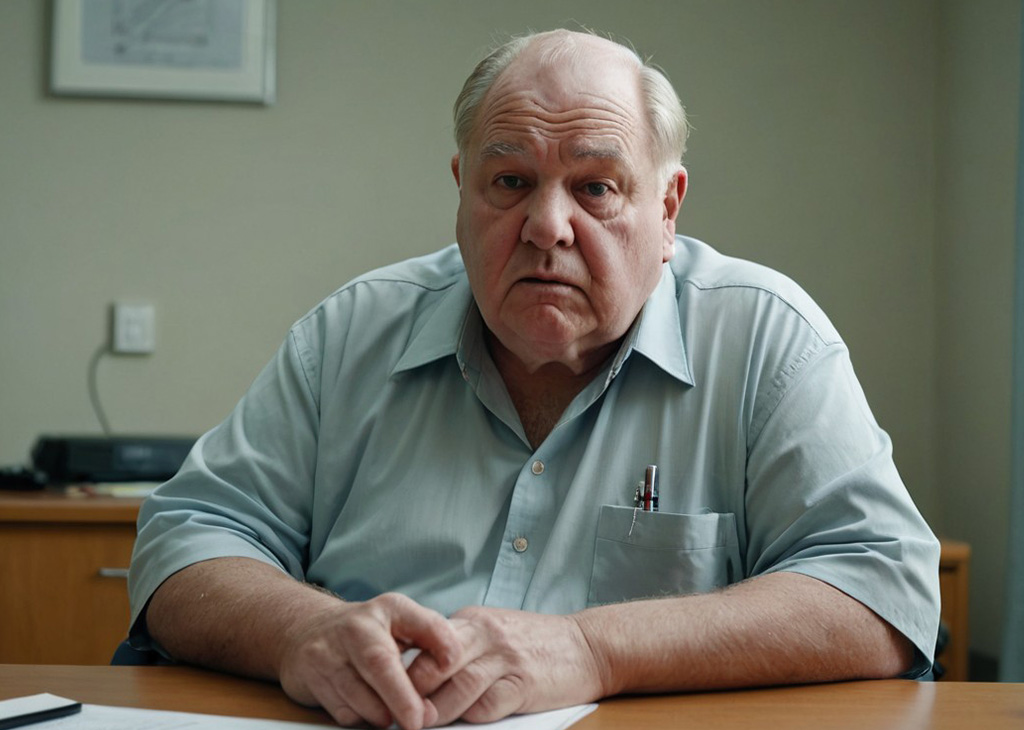Chronic ConditionsThe Diabetes Divide: Why Poor People Are Most Affected
An Apple Core Kind of Life
Apples were my family's snack of choice growing up — no special variety, just a daily bite of normal. My father would do this with his old army knife, peeling them into long spirals, always taking the first juicy piece as tax. Now I'm the one who is unduly chewing on the hard, cold leftovers after my children have fallen off the wagon. It's got me thinking: so much of life has this illusion of choice, when it's not really choice, it's what is landed in front of you. Take health — sure, we'd all like to believe it's about the willpower you can muster up, but if anything it's more like that apple core: shaped by the place you live, the money you make and what the world throws at you.
It's true that diabetes is the center mass in the U.S. — and it is not hitting priorities evenly. It's smashing the low-income range way across the board, at least in probability, way harder than it's smashing the rich. It struck me like a ton of bricks, the Centers for Disease Control and Prevention's November 2024 fat briefing: 14.3 percent of American adults over the age of 20 have diabetes, 2021-2023 tracking. Zoom out to poorer neighborhoods, though, and that number increases. Why? Are they slacking? Or is “healthy living” a rigged game? Let's unpack this class gap — why it's widening and whether we can swap out all the blame for something bigger. It's 2025, and this health inequality mess is everywhere in the news — let's get into it.

The Numbers Don't Lie: An Income Crisis
Here's the brutal honesty: diabetes is not being kind.” The American Diabetes Association's 2025 Standards of Care says that 537 million adults worldwide had the disease in 2021, and 783 million will have it by 2045. In the U.S., though, income tells a better story. Erstwhile serious illnesses included, increasingly, diabetes; a 2023 study in the American Journal of Preventive Medicine found that between 2008 and 2021, individuals from low-income households — who made less than 1.3 times the federal poverty line — had a 40 percent to 100 percent higher risk of diabetes than wealthy people did. That gap rocketed in 2011-2014 and became an astounding 100.4%.
The New York Times, 2024 late, spotlighting Chicago's South Side, where diabetes runs at 20% — through the roof compared to the national average. My patients want to be healthy,” the local doc there told them, “but they're out of options.” It's not sloth — it's a food trap, no-exercise venues, fragmented health care. "In January 2025, The Washington Post joined the chorus and published a study showing that 60 percent of low-income city dwellers' calories came from processed junk, compared to 30 percent in wealthier neighborhoods” Cheap food laced with sugar and fat? That's a diabetes fast lane.
Why the Poor Get Pinned
The Cheap Food Trap
Low-income plates are stacked against health. Time magazine's December 2024 cover story stuck with me: Kelly, a Detroit single mom, works 12-hour shifts and feeds her three kids frozen pizza and soda. “I know it's trash,” she said, “but organic veggies cost triple—I can't swing it.” Brutal, but real. The USDA pegs a pound of beef at $7 in 2024, while frozen fries are $2. Healthy eating's a luxury when you're scraping by. The Lancet (2024) ties it straight to diabetes—94% of countries see obesity climbing with processed diets, and obesity's the biggest 2-type trigger. In low-income U.S. spots, “food deserts” seal the deal: fast food's everywhere, supermarkets are ghosts.
Exercise? More Like a Privilege
Moving's a battle too. My friend works in a public housing community in Brooklyn — and those folks are avoiding the runs — parks are precious spaces and streets can be dicey. (And in January 2025 a review for NPR found James in Atlanta: “Sidewalks here are busted, and nighttime's sketchy — who's jogging?” CDC numbers corroborate: only 25% of low-income people reached the goal of exercising for 150 minutes a week by 2023; 60% of better-off people did. Fancy neighborhoods have outfitted gyms and trails; poorer areas get nothing.

Healthcare's Paywall
And then there's the kicker: access to medical care. Diagnose diabetes early enough, and you can stop the worst from happening — low-income people almost never get that chance. I shattered when I read the October 2024 CNN story about Tom in North Carolina: Uninsured at 45, he had waited two years to seek treatment for foot pain. Diagnosis? Diabetes, too late — and a leg is gone. “A checkup was $200,” he said. “I couldn't afford it.” According to the Kaiser Family Foundation (KFF), 15% of adults under twice the poverty line were uninsured in 2024—two times the 8% national level. No coverage, no screenings, no way.
“Just Try Harder”? Yeah, Right
You've sized up: “Eat better, move more — case closed!” Sure, if life's that simple. In January 2025, remember, The Atlantic threw a curve: “If health's all on you, why do the poor keep losing?” The ADA's findings would seem to bear the above out — income, education and housing outweigh grit every last time. Kevin C., no response, but my old scooter debate all over again: Sure, I could “choose” it, my budget said nope. Low-income people aren't skipping kale for giggles — they're trapped in a system that doesn't budge.
CDC “Health Equity” November 2024 goal of combating complications via free gyms, food subsidies — noble, but Newsweek ain't buying'. Previous efforts have rarely gotten off the ground — the money dribbles away, plans vanish. If the layout is wrong, good vibes don't fix it.
Beyond the Core: A Bigger Fix
Gnawing that apple core, sure, I understand — what's left, you make do. As the poor do with diabetes: cheap food, nowhere to safely move their bodies, stuck paying the man at the doctor. But it shouldn't end there. Structural intervention is the 2025 buzzword — health is not only on you, it's on society. The Lancet (2024) proposes tax breaks to lure grocers into food deserts, broader nets for insurers — things to do, not speeches to hear.
What if we flipped it? Approach diabetes as a social challenge, not a personal failing. I avoided the scooter to keep it light — maybe more low-income neighborhoods need lower-cost vegetables and safe sidewalks and doctors they can afford to see without going broke, not another “eat right” lecture.
You Don't Just Have a Core
That diabetes-class gap isn't new, but it still stings, in 2025. Low-income people aren't more lazy — they come up against tougher odds. Health equity isn't a slogan, it's data, it's action and it's accountability for the fact that it's not just “their problem.” And maybe soon they'll have the whole fruit — firm and mature and theirs — like the unspoken triumph of devouring that inner core. Your thoughts — can we rewrite this script?
